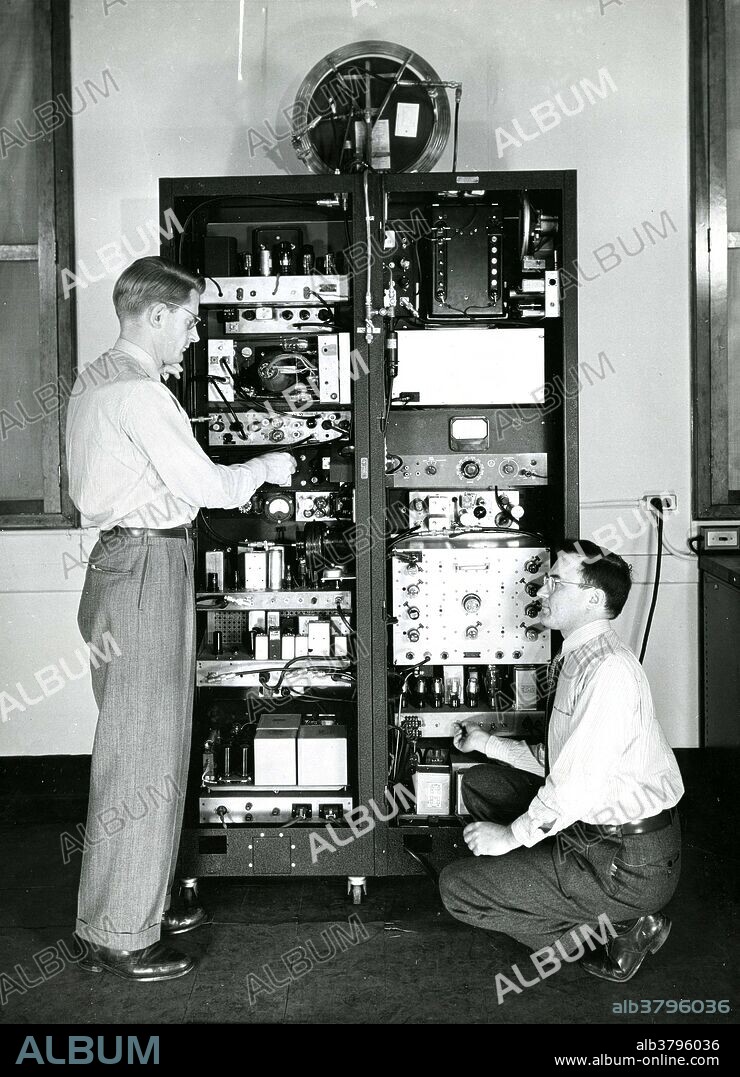alb3796036
Ammonia MASER, First Atomic Clock

|
Ajouter à une autre Lightbox |
|
Ajouter à une autre Lightbox |



Avez-vous déjà un compte? S'identifier
Vous n'avez pas de compte ? S'inscrire
Acheter cette image.
Sélectionnez l'usage:

Titre:
Ammonia MASER, First Atomic Clock
Légende:
Voir la traduction automatique
Back side of ammonia molecule clock with B. F. Husten and E. D. Heberling. An atomic clock is a clock device that uses an electronic transition frequency in the microwave, optical, or ultraviolet region of the electromagnetic spectrum of atoms as a frequency standard for its timekeeping element. The principle of operation of an atomic clock is not based on nuclear physics, but rather on atomic physics; it uses the microwave signal that electrons in atoms emit when they change energy levels. The idea of using atomic transitions to measure time was first suggested by Lord Kelvin in 1879. Magnetic resonance, developed in the 1930s by Isidor Rabi, became the practical method for doing this. In 1945, Rabi first publicly suggested that atomic beam magnetic resonance might be used as the basis of a clock. The first atomic clock was an ammonia maser (microwave amplification by stimulated emission of radiation) device built in 1949 at the U.S. National Bureau of Standards (NBS, now NIST). The world's first atomic clock using the ammonia molecule as the source of vibrations.
Personnalités:
Crédit:
Album / NIST/Science Source
Autorisations:
Taille de l'image:
3034 x 4200 px | 36.5 MB
Taille d'impression:
25.7 x 35.6 cm | 10.1 x 14.0 in (300 dpi)
Mots clés:


 Pinterest
Pinterest Twitter
Twitter Facebook
Facebook Copier le lien
Copier le lien Email
Email
